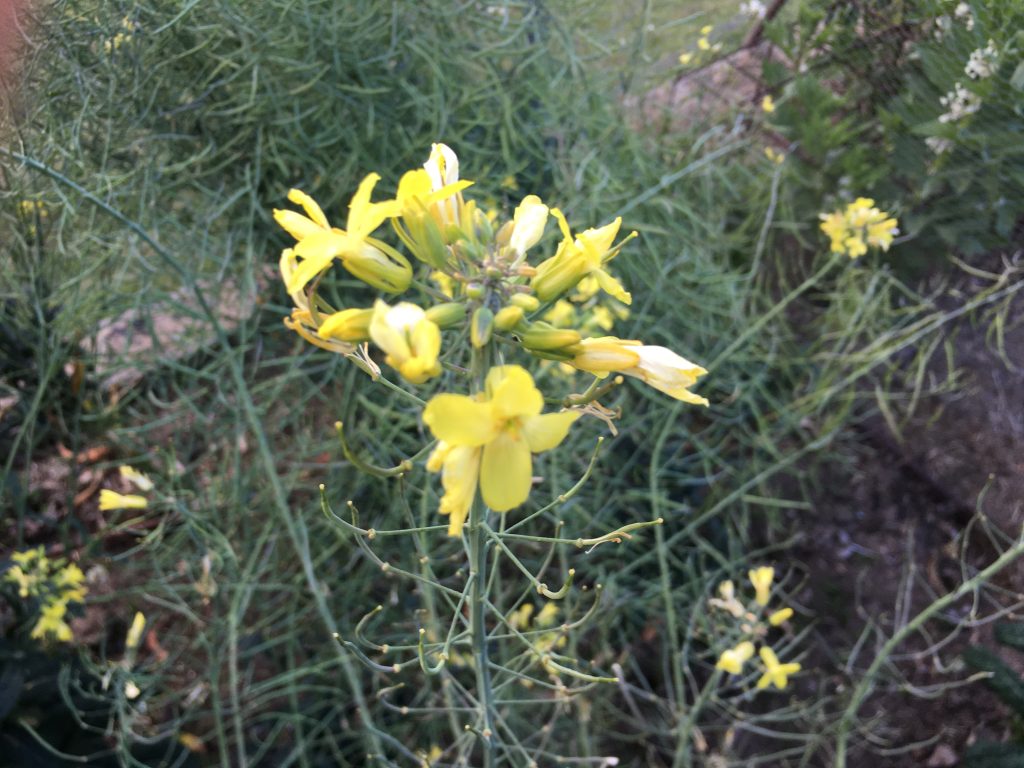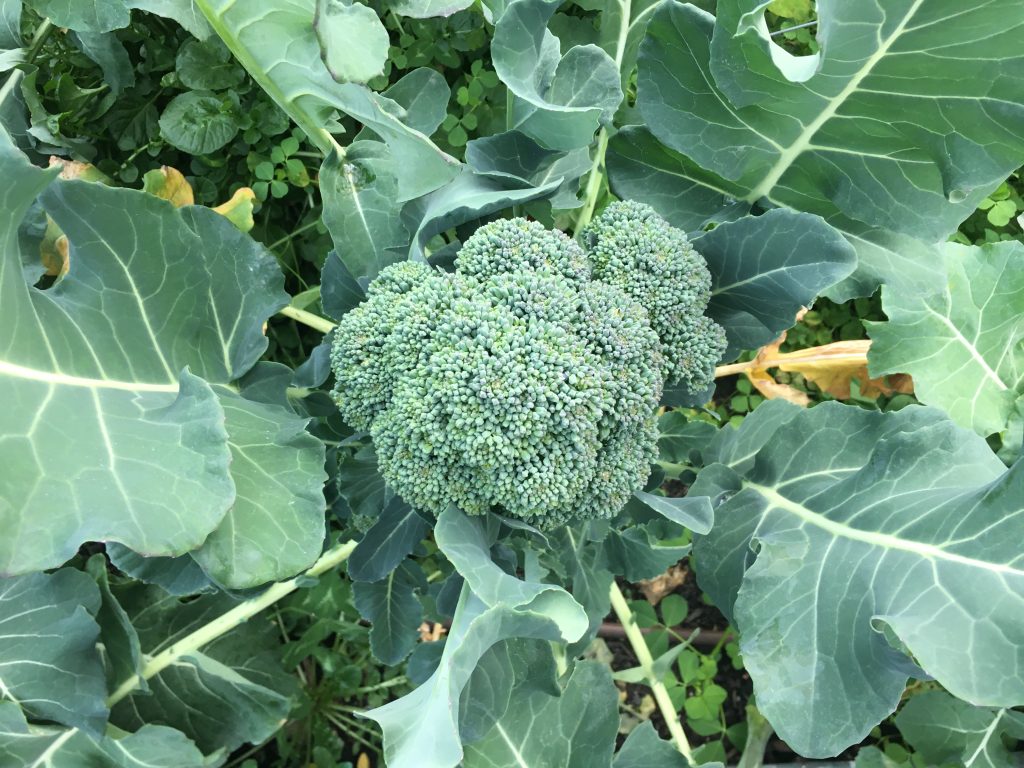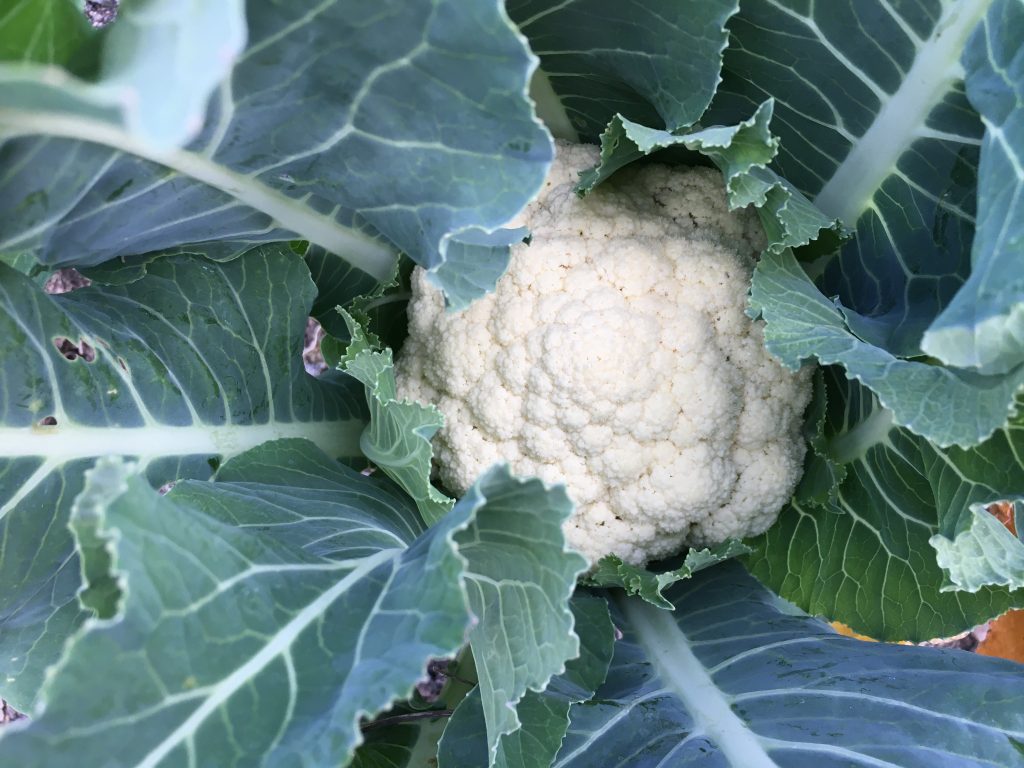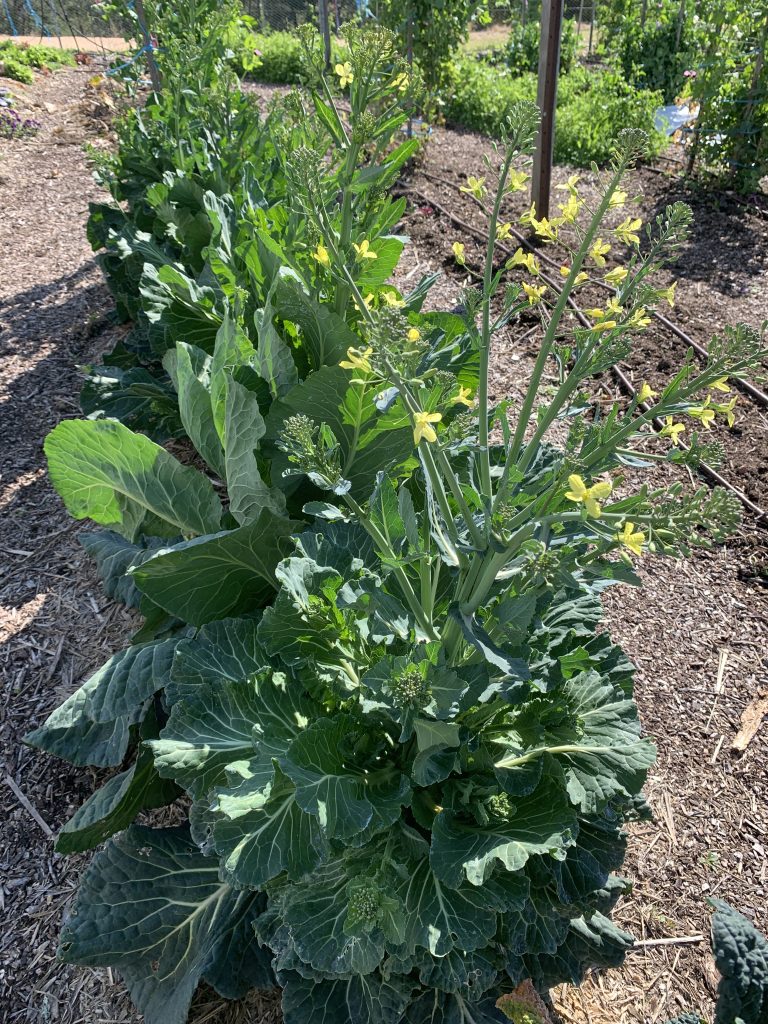Botanical name : Brassica oleracea
Synonyms :
Common name : Cabbage, broccoli, cauliflower, kale, Brussels sprouts, collard greens, Savoy cabbage, gai lan, kohl rabi
Challenging for seed saving
Lifecycle: Biennial
Pollination: Insect pollinated
Mating system: Perfect flowers, some varieties are self-incompatible
Suggested spacing: 45 to 60cm
Seed specific requirements: Vernalisation required
Isolation distance: 250 metres or more
Population size: 10 to 20 plants
Seed maturity: Pods turn brown when seed is mature
Processing method: Dry threshing, sieving and winnowing
Expected seed viability: 4 years
Images








Growing for seed
Brassica oleracea varieties can be challenging to grow for seed for a number of reasons:
- Making sure they are appropriately separated from other crops of the same species.
- Ensuring they go through vernalisation and that flowering is triggered
- Dealing with self-incompatibility
Isolation
A large number of brassica crops are of the species Brassica oleracea. To save seed that will grow true-to-type it is necessary to isolate the desired seed crop from any other flowering plants of the same species. All of the following are B. oleracea : cabbage, broccoli (excluding broccoli raab), cauliflower, kale (except Siberian/Russian kales), Brussels sprouts, collards, gai lan, and kohl rabi.
Flowers of all B. oleracea varieties are cross-pollinated by insects and are especially attractive to feral bees. Isolation distances of at least 250 metres are needed to reduce the risk of unwanted crosses.
Vernalisation
As biennials most Brassica oleracea crops need a significant period of cold to initiate flowering. The number of cold hours needed varies considerably across the varieties. Many locations in southern Australia are ideal for vernalisation of Brassica oleracea crops to produce seed. Temperatures below 10 C but above -10 C are generally ideal. All that is required is enough hours at those temperatures to trigger the variety to flower.
Plants must be mature enough before vernalisation starts for flowering to be triggered. This usually means a minimum of 8 true leaves. Better seed will be produced by stronger, bigger plants so sowing in mid to late summer is usually required to achieve good sized plants before vernalisation starts. Flowering then begins after the required number of cold hours have occurred.
In Australia there are very few growing locations that get cold enough to winter kill these Brassica crops. No special actions need to be taken to over-winter Brassica oleracea crops unless extended periods below -10 C are expected. They can be left in the ground to grow through winter. They will then flower in their second growing season.
Note that in Australia winter occurs in the middle of the calendar year, but we have inherited the term “biennial” from the northern hemisphere. Where it means the “second year” as they change calendar years during their winter. In the Australian context our second growing season, after a period of cold, occurs in the same calendar year. It does not take two years to save Brassica oleracea seeds in Australia.
Self-incompatibility
Pollen from many varieties of Brassica oleracea are not able to fertilise flowers on the same plant. To ensure good seed set a minimum of five plants of any variety should be left to flower together.
Cabbage specific requirements
Cabbages have been bred deliberately with tight heads. This makes it difficult for their flower stalks to grow upwards which is necessary for insects to gain access to effect pollination. It is usual for the grower to help them along by cutting a cross into the top of the cabbage head so that the flower stalks can push through. Care needs to be taken not to cut too deeply and damage the flower stalks. Usually cuts about 2cm deep are sufficient.
Selection
Plants being grown for seed should be selected on form and vigour. Specific traits will depend on the variety being grown for seed.
Harvest
Pods mature at the bottom of flower stalks first. The first set pods will be at risk of splitting and seed falling in the garden while possibly still flowering at the top of the stalk. The biggest and best seed will come from the first set pods. Cut flower stalks as soon as the bottom most pods are brown and crisp. If there is any sign of those pods starting to shatter in the field the stalks should be collected promptly.
Stalks can be put into large harvest bags or spread out on tarps for drying.
Processing
Dried stalk and pods are easily threshed by walking on them. Sieves can be used to remove the seeds from the bulky stalk and pod fragments. Winnowing will remove smaller frass and leave the seeds.
Storage
After processing seed should be left in a paper bag for a few weeks. Even these small seeds can hold a surprising amount of moisture.
There is a fair likelihood that insect pests will have laid their eggs in or on the seed. To stop them in their tracks one of the easiest methods of control is to freeze the seed for a few days. To do this the seed must be absolutely dry first. It then must be placed in a sealed airtight container – like a glass jar – and left in a freezer for 48 to 72 hours to kill pests and their eggs.
Seed is best stored in an airtight container where it is dark, cool and dry.
Contributors
Liz Worth, Nellie Pryke, Julie Davies
